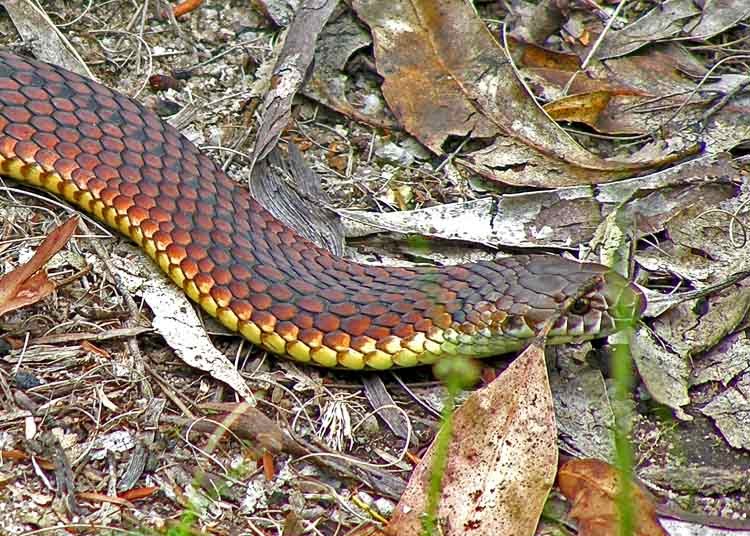Description
Venomous snakes use modified saliva, snake venom, usually delivered through highly specialized teeth such as hollow fangs, for the purpose of prey immobilization and self-defense. In contrast, non-venomous species either constrict their prey, or simply overpower it with their jaws.
Venomous snakes include several families of snakes and do not form a single taxonomic group. This has been interpreted to mean that venom in snakes originated more than once as the result of convergent evolution. Evidence has recently been presented for the Toxicofera hypothesis however; venom was present (in small amounts) in the ancestor of all snakes (as well as several lizard families) as 'toxic saliva' and evolved to extremes in those snake families normally classified as venomous by parallel evolution. The Toxicofera hypothesis further implies that 'non venomous' snake lineages have either lost the ability to produce venom (but may still have lingering venom pseudogenes), or actually do produce venom in small quantities, likely sufficient to assist in small prey capture, but cause no harm to humans if bitten.
 venomous snakes
venomous snakesLists or rankings of the world's "most venomous snakes" are tentative and differ greatly due to numerous factors, including the recentness and reliability of the data, the number of species analyzed, and the testing methods used.[1] In addition, since mice are the common indicator used to test venom from venomous snakes in LD50 tests, the LD50 results may not reflect the actual effects on humans due to the physiological differences between mice and humans. For example, many venomous snakes are specialized predators on mice, and their venom may be adapted specifically to incapacitate mice. While most mammals have a very similar physiology, LD50 results may or may not be directly relevant to humans.
 venomous snakes eat the frog
venomous snakes eat the frog venomous snakes dangerous
venomous snakes dangerous venomous snakesWhile there have been numerous studies on snake venom, potency estimates can vary, creating overlap and greatly complicating the task. Further, LD50 may be measured through intramuscular, intraperitoneal, intravenous or subcutaneous injections on small rodents, although the latter is the most applicable to actual bites It should also be considered that mice, the most commonly used animals in determining LD50, may react to some snake venoms differently than humans do. Thus, it remains difficult to compile such lists.
venomous snakesWhile there have been numerous studies on snake venom, potency estimates can vary, creating overlap and greatly complicating the task. Further, LD50 may be measured through intramuscular, intraperitoneal, intravenous or subcutaneous injections on small rodents, although the latter is the most applicable to actual bites It should also be considered that mice, the most commonly used animals in determining LD50, may react to some snake venoms differently than humans do. Thus, it remains difficult to compile such lists.Many of these lists only take into account of terrestrial and arboreal snakes and neglect to list the of venom of the sea snakes. Species of sea snakes have been listed to have more toxic venom than even that of the inland taipan and further investigations of some species' venom are needed
 venomous snakes dangerous of the world
venomous snakes dangerous of the world venomous snakes beautifull
venomous snakes beautifull venomous snakes
venomous snakes venomous snakes
venomous snakes venomous snakes
venomous snakesOther information
Venomous snakes are often said to be poisonous, although this is not the correct term, as venoms and poisons are different. Poisons can be absorbed by the body, such as through the skin or digestive system, while venoms must first be introduced directly into tissues or the blood stream (envenomated) through mechanical means. It is, for example, therefore harmless to drink snake venom as long as there are no lacerations inside the mouth or digestive tract. There are however two exceptions: the Rhabdophis snakes (keelback snakes) secrete poison from glands that it gets from the poisonous toads that it preys on; similarly certain garter snakes from Oregon retain toxins in their liver from the newts they eat.
No comments:
Post a Comment